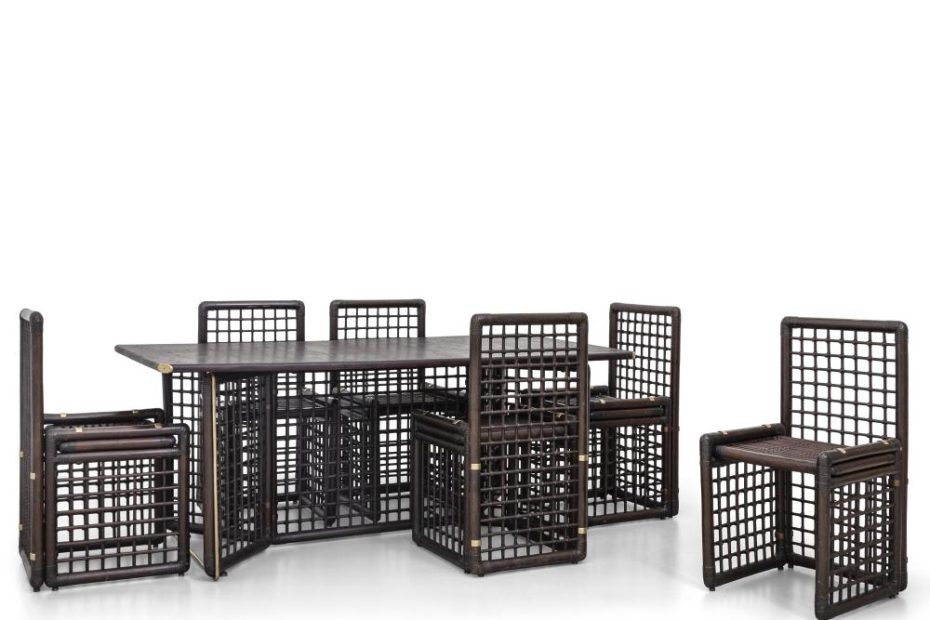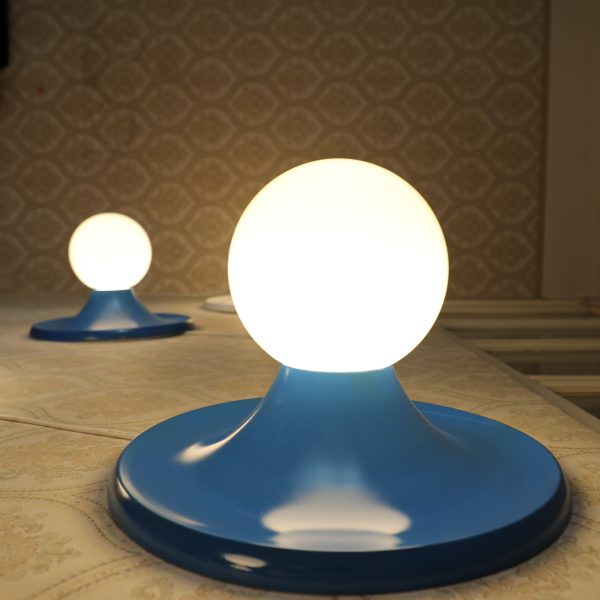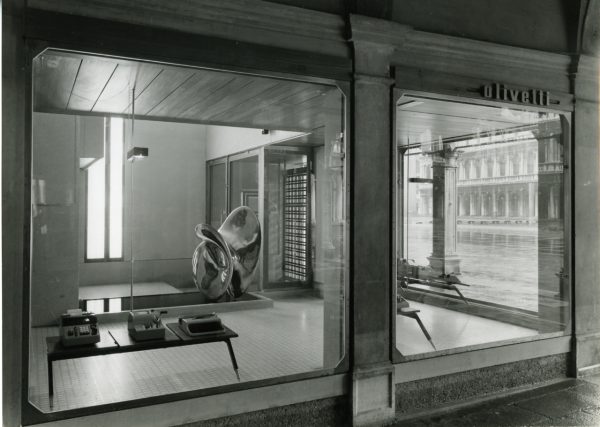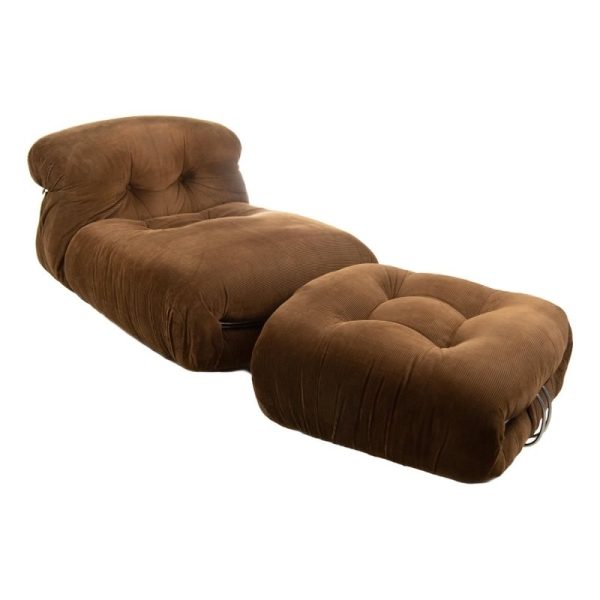We find ourselves back again in the midsummer heat – this time with a gelato in one hand, you are invited to take a seat on our chic rattan sofa designed in the 1970s by Afra and Tobia Scarpa for their “Basilian I” furniture series, which is characterized by pure rectangular rattan frames based on squared decoration joined together with metal details. The “Basilian I” series includes a variety of furniture ranging from sofas, book shelves, side tables, dining tables as well as dining chairs to lounge chairs and coffee tables…forming a big “family” of stylistically related furniture pieces.


The birth of famous Italian lighting company Flos itself was, in part, based on the creative input by the Castiglioni brothers as well as by Tobia Scarpa and his wife Afra Scarpa. Tobia Scarpa was born in 1935 as the son of acclaimed architect Carlo Scarpa, who designed major projects in Venice such as the Fondazione Querini Stampalia and the Olivetti Showroom or the Brion Cemetery in San Vito d’Altivole.

Being the son of a Venetian architectural maestro, certainly has an impact on your own creative trajectory…So, it might not come as a surprise that the young Tobia decided to study architecture at the Università Iuav di Venezia – where he also met and fell in love with fellow architecture student Afra Bianchin. In the 1960s, they opened their own design studio as a married couple in Montebelluna and started what later would become a very fruitful and hugely influential collaboration in the field of furniture design, until Afra’s death in 2011. Apart from the “Basilian I” series mentioned above, Afra and Tobia also designed for example the iconic “Soriana” seating ensembles in 1969 for Cassina. Due to their complex design achieved using simple tools, the Soriana series won the Compasso d’Oro in 1970. Nowadays, the extensive work by Afra and Tobia Scarpa is included in the permanent collections of major museums such as The Museum of Modern Art in New York, the Philadelphia Museum of Art, the V&A Museum in London, or the Museum of Contemporary Art in Chicago.

At first glance, Tobia Scarpa apparently follows in his father’s footsteps by studying architecture and forging a very successful career – some would even say “Like father, like son.” However, we should also recognize the potential difficulty of dealing with a parent’s legacy. It’s perhaps for exactly this reason, that – relatively early in his career – Tobia Scarpa set is focus on becoming a designer rather than on becoming an architect. In an interview with Architonic in 2014, Tobia Scarpa emphasizes his deep respect for his father, Carlo Scarpa, and explains that he became a designer in order to avoid interfering or competing with his father’s architectural work. [1] While the extensive work of Carlo Scarpa also includes designs for furniture and Murano glass works, he worked first and foremost as an architect. Tobia Scarpa, therefore, managed to forge his on way by opting to become a designer in his own right and by forming a remarkable collaboration with his wife, Afra. Together, Afra & Tobia contributed their very own chapter to the success story of the Scarpa family.
We hope you enjoyed our little tale about kinship and we would certainly love to welcome you as part of our own furniture-loving family!
xx
ohne butter team
[1] Reference: „Go your own way: Tobia Scarpa” interview with Tobia Scarpa by Simon Keane-Cowell. Zürich, Switzerland 09.02.14 https://www.architonic.com/en/story/simon-keane-cowell-go-your-own-way-tobia-scarpa/7000858